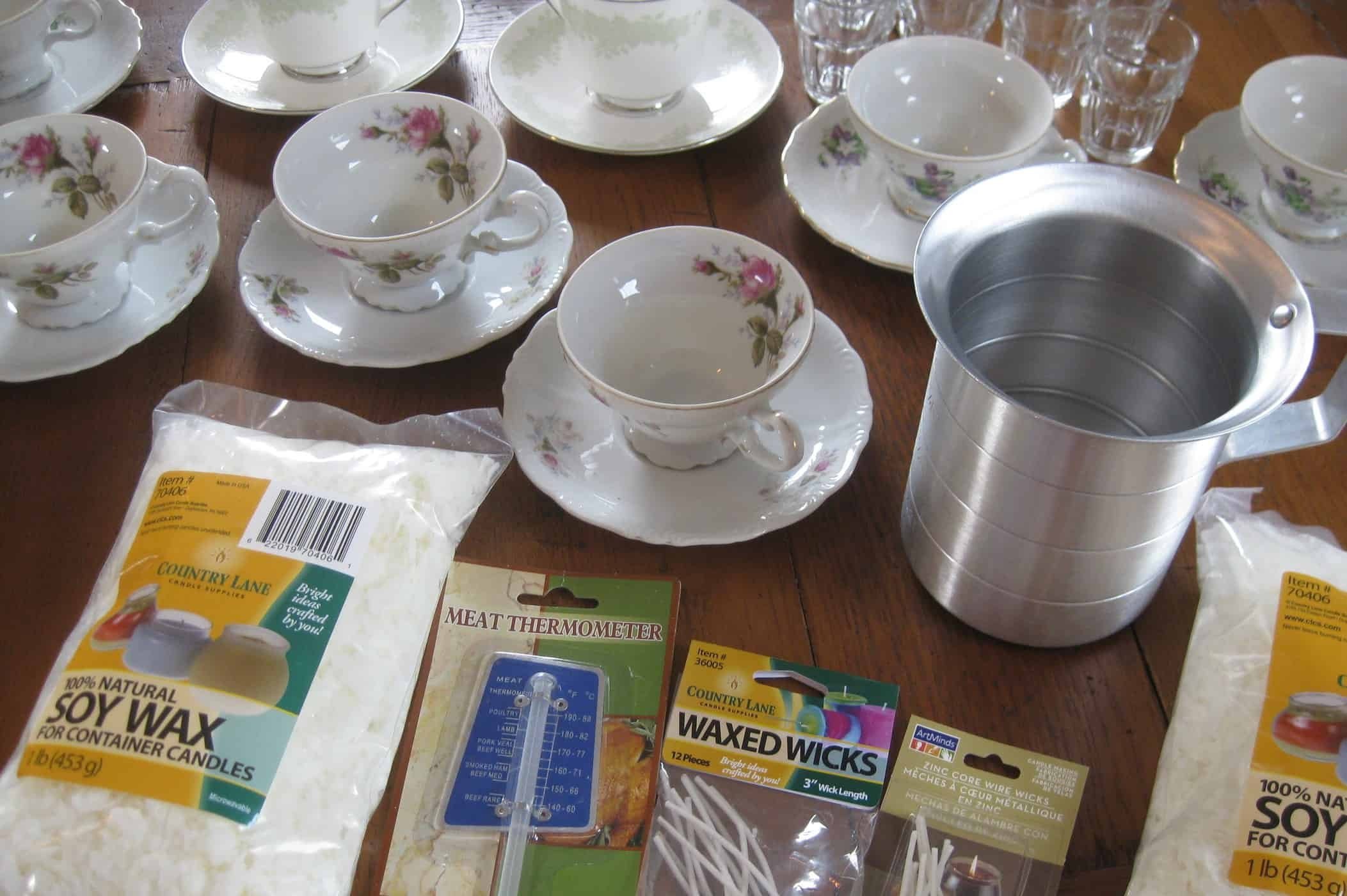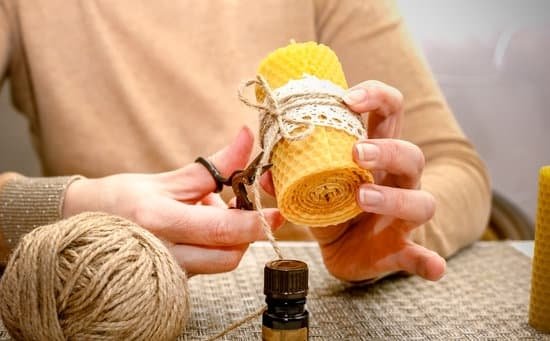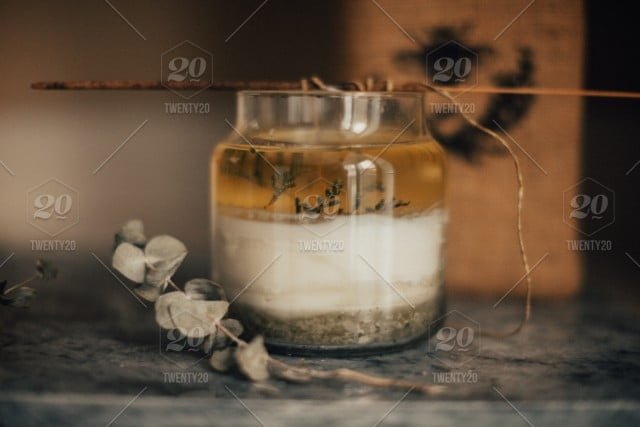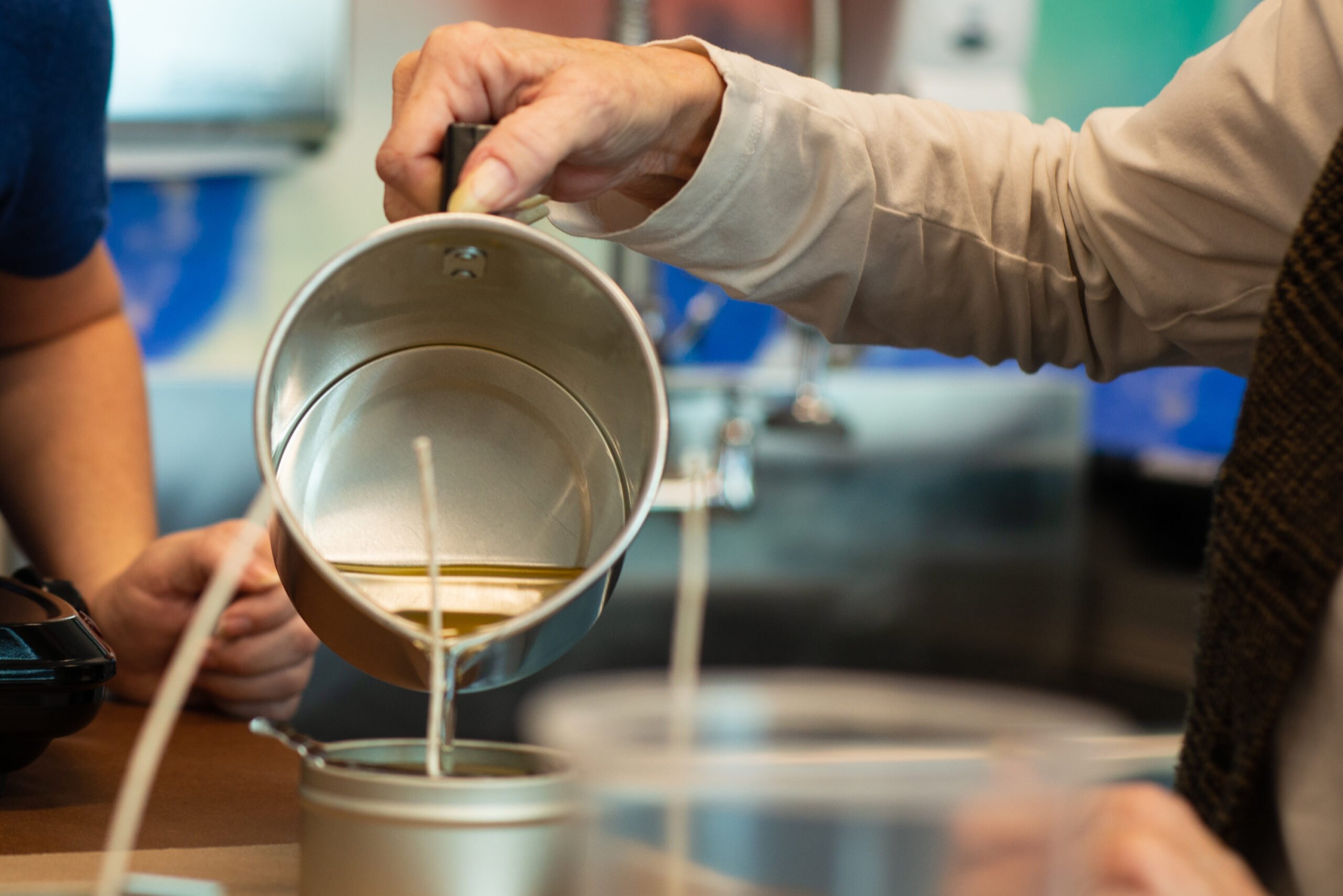Candle making is a beloved craft that has captivated the hearts of people for centuries. The process of creating a candle from scratch, molding the wax, adding fragrance, and witnessing it slowly illuminate a room is a gratifying experience that allows individuals to tap into their creativity. Whether it’s for personal use or as a thoughtful gift, candles have consistently remained a popular choice in home decor and relaxation rituals.
The allure of candle making lies not just in the final product but also in the journey of crafting it. It provides an avenue for self-expression and serves as a therapeutic outlet for many enthusiasts. The act of melting wax, selecting colors and scents, and carefully pouring them into molds can be incredibly soothing and meditative. It allows individuals to escape from daily stresses and indulge in creating something beautiful with their own hands.
Furthermore, candle making offers endless possibilities in terms of customization. From choosing different types of waxes to experimenting with various fragrances and designs, each candle can be unique and tailored to one’s own preferences or occasion. The ability to showcase individuality through color combinations or artistic techniques is what sets candle making apart from simply purchasing pre-made candles.
Understanding the Different Types of Candle Wax
Candle making is an art that has been practiced for centuries, with its origins dating back to ancient civilizations. The process involves melting wax and adding a wick to create a beautiful and functional source of light. Today, candle making continues to be a popular hobby and craft due to its therapeutic benefits and the creative outlet it provides.
When it comes to candle making, choosing the right type of wax is crucial. There are several options available, each with its own unique characteristics and advantages. One of the most common types of candle wax is paraffin wax, which is derived from petroleum. Paraffin wax is known for its affordability, ease of use, and ability to hold fragrance well.
Another popular option is soy wax, which is made from soybean oil. Soy wax is favored by many as it is environmentally friendly, renewable, and biodegradable. It also has excellent scent throw capabilities and burns slower than other waxes.
Beeswax is another natural wax option that has gained popularity in recent years. It offers a subtle honey-like scent and produces a warm glow when burned. Beeswax candles have a long burn time and do not emit toxins when lit.
Palm wax, coconut wax, and gel wax are also commonly used in candle making. Each type of wax has its own unique properties that can affect scent throw, burn time, appearance, and overall performance of the candle.
Before embarking on your candle making journey, take the time to research and experiment with different types of waxes to determine which one suits your preferences and needs best. Consider factors such as burn time, fragrance retention, clarity, color opacity, ease of use in containers or molds, availability in your area or online stores before deciding on your ideal choice of wax.
The Role of Dyes in Candle Making
Dyes play a crucial role in candle making as they enhance the aesthetic appeal of candles. Whether you are making candles for personal use or as gifts, adding dyes allows you to customize the colors and create unique designs that suit your preferences or match a specific theme or occasion. Colorful candles can instantly brighten up a room, create a relaxing ambiance, or serve as eye-catching decor pieces.
When it comes to candle making, there are various types of dyes available on the market. These dyes come in different forms such as liquid dyes, dye chips, or powdered dyes. Liquid dyes are easy to work with and provide vibrant colors, while dye chips and powdered dyes offer convenience and allow for better color mixing.
One important consideration when selecting dyes for your candles is to ensure that they are specifically made for candle making. Candle dyes are typically oil-based or wax-based, which means they will blend well with the melted wax and result in even coloring throughout the candle. Using other types of coloring agents, such as water-based food coloring or non-candle-specific dyes, may not produce desired results and can affect the quality and burn characteristics of the candle.
| Dye Type | Compatible Wax Types | Advantages |
|---|---|---|
| Liquid Dye | Soy Wax, Paraffin Wax | Easily mixable and provides vibrant colors |
| Dye Chips | Beeswax, Soy Wax | Convenient to use and create solid, consistent colors |
| Powdered Dye | Paraffin Wax, Beeswax | Allows for precise color control and blending |
Ultimately, the choice of dye depends on the desired effect, personal preferences, and the wax type you are using. Experimenting with different dyes can be a fun and creative part of candle making, allowing you to create unique and visually appealing candles that reflect your style and vision.
Food Coloring
Food coloring is a commonly used type of dye in various culinary applications, but can it be used in candle making? Many candle makers have wondered if food coloring is a viable option for adding color to their creations. In this section, we will explore the idea of using food coloring in candle making and discuss its advantages and disadvantages.
One advantage of using food coloring in candle making is its accessibility. Food coloring can be easily found in most grocery stores or online, making it a convenient option for those who want to experiment with different colors without having to invest in specialized candle dyes. Additionally, food coloring comes in a wide range of vibrant shades, allowing candle makers to achieve the desired color intensity they are looking for.
However, there are some disadvantages to using food coloring in candles. One major concern is the potential for the colors to fade or change over time. While some food coloring brands may hold up well in candles, others may not be as stable and can lose their vibrancy or morph into unexpected hues. It is important for candle makers to test small batches before committing to larger quantities when using food coloring.
Another disadvantage of using food coloring is its compatibility with different types of wax. Some dyes may mix well with certain types of wax, while others can cause separation or sedimentation issues. For example, oil-based food coloring might not mix well with water-based waxes like soy wax. It is crucial for candle makers to research and understand how different types of wax interact with food coloring before incorporating it into their candles.
| Wax Type | Compatibility with Food Coloring | Behavior |
|---|---|---|
| Soy Wax | Variable | Slight color fading reported over time |
| Paraffin Wax | Mixed | Sedimentation issues reported with some food coloring brands |
| Beeswax | Compatible | No major compatibility issues reported |
It is clear that the compatibility and behavior of food coloring can vary depending on the type of wax used. Candle makers should conduct small-scale tests before using food coloring in larger batches, carefully observing how the colors hold up over time and if any unexpected reactions occur.
In the next section, we will delve into specific techniques and tips for incorporating food coloring effectively in candle making to achieve the desired results.
Compatibility of Food Coloring with Different Wax Types
When it comes to creating colorful and visually appealing candles, the choice of coloring agents is crucial. While many candle makers turn to specially formulated candle dyes, some wonder whether food coloring can be a viable option. Let’s dive into the compatibility of food coloring with different wax types to see if it can produce desired results.
When using food coloring in candle making, the compatibility may vary depending on the type of wax being used. It is important to note that food coloring is primarily designed for use in edible products and may not behave in the same way when applied to wax.
– Soy Wax: Soy wax tends to have a higher oil content, which can make it more challenging for food coloring to disperse evenly. However, by using liquid or gel-based food coloring and testing different ratios, achieving vibrant colors in soy candles is still possible.
– Paraffin Wax: Paraffin wax, being a petroleum-based wax, has a better affinity for dye molecules. This means that whether using liquid or gel food coloring, it tends to blend well with paraffin waxes and produce consistent color saturation.
– Beeswax: Beeswax presents another challenge when it comes to incorporating food coloring. Due to its unique composition and natural yellowish color, achieving bright and vivid hues using food coloring alone might be difficult. However, pairing small amounts of compatible candle dye with food coloring can help enhance the overall appearance of beeswax candles.
While food coloring offers versatility in terms of color options that may already be available in your kitchen pantry, there are some considerations to keep in mind before diving into this alternative:
– Pigment Concentration: Food colorings are typically less concentrated than candle-specific dyes. As a result, you may need to use larger quantities of food coloring to achieve the desired intensity, which can affect the overall composition and consistency of your candle.
– Fading Over Time: Food coloring may be more prone to fading over time when exposed to sunlight or heat. This can result in a less vibrant and visually appealing candle compared to those colored with specially formulated dyes.
– Unpredictable Results: Keep in mind that since food coloring is not specifically designed for candles, there is a chance of unpredictable results. The colors may react differently with the wax, resulting in variations or inconsistencies in color distribution.
Despite the potential challenges, experimenting with food coloring in candle making can offer a unique and budget-friendly approach to achieve personalized color palettes. Remember to always conduct small test batches and document your findings to create a reliable reference guide for future projects.
Techniques and Tips for Incorporating Food Coloring in Candle Making
Step-by-Step Instructions for Using Food Coloring in Candle Making
When it comes to incorporating food coloring in candle making, there are a few techniques and tips that can help you achieve the desired results. Here is a step-by-step guide to using food coloring effectively:
- Choose your wax: Before adding food coloring, decide on the type of wax you want to use for your candles. Different types of wax may react differently to food coloring, so it’s important to consider their compatibility.
- Prepare the wax: Melt the candle wax according to the manufacturer’s instructions. Ensure that the wax reaches the proper pouring temperature before adding any color.
- Add color gradually: Start by adding a small amount of food coloring to the melted wax and stir well. Remember that a little goes a long way, so start with just a drop or two and gradually increase as needed.
- Test your color: To gauge the intensity of the color, take a small amount of the colored wax and pour it into a disposable mold or container. Allow it to cool completely and observe if it matches your desired shade. If not, adjust accordingly by adding more food coloring.
- Mixing different shades: Food coloring offers endless possibilities when it comes to creating customized colors for your candles. Experiment with blending different colors together to achieve unique shades and effects.
- Avoid overheating: One crucial tip is to avoid overheating the colored wax during stirring or mixing, as this can result in fading or weakening of the color. Always use low heat settings and stir gently until well incorporated.
Tips for Achieving Desired Color Intensity
- Start with lighter shades: For pastel-colored candles, begin with light-colored waxes such as soy or white paraffin before adding food coloring. This will make achieving softer hues easier.
- Use liquid rather than gel-based food coloring: Liquid food coloring is preferable as it mixes more easily with the wax. Gel-based colorings can cause clumping or uneven distribution of color.
- Consider the opacity of the wax: Keep in mind that the natural color of your chosen wax will influence the final outcome. For example, if you’re using a translucent wax like soy, it may affect the visibility and vibrancy of certain colors.
- Avoid excessive stirring: Aggressive stirring or prolonged mixing can introduce air bubbles into the colored wax. This may affect the overall look and quality of your finished candles.
- Experiment and have fun: Using food coloring in candle making allows for creativity and experimentation. Don’t be afraid to blend various colors, test different ratios, or try new techniques to achieve unique and stunning results.
By following these techniques and tips, you can successfully incorporate food coloring into your candle making process and create beautiful candles that reflect your personal style and preferences.
Safety Concerns and Precautions when Using Food Coloring
While food coloring can be a convenient option for coloring candles, it’s essential to consider some safety concerns and take necessary precautions:
- Skin safety: Food coloring is not designed specifically for candle making, so it’s crucial to handle it with care. Wear gloves to protect your hands from potential staining or skin irritations.
- Color stability: Some food dyes may not withstand high temperatures well, which could lead to color fading or discoloration when exposed to heat from burning candles. It’s recommended to conduct burn tests before selling or gifting any colored candles.
- Candle performance: The addition of too much dye or an incompatible dye may impact the burn quality of your candles. Excessive dye can affect their fragrance throw or cause irregular combustion. Ensure you follow proper guidelines for safe usage concentrations provided by reputable candlemaking suppliers.
- Staining risks: Consider that using excessive amounts of certain food coloring agents can stain surfaces, fabrics, or skin. It is advisable to avoid using large amounts of very concentrated coloring solutions in your candle making process.
Taking these precautions into account will help you enjoy the benefits and creativity that food coloring brings to candle making while ensuring the safety and quality of your homemade candles.
Concerns and Precautions of Using Food Coloring in Candle Making
Using food coloring in candle making can be a fun and creative way to add vibrant colors to your candles. However, it is important to be aware of certain concerns and take necessary precautions when using food coloring in your candle making process.
One concern when using food coloring in candles is the potential for color bleeding or fading. Food coloring is not specifically designed for candle making and may not hold up well when exposed to high temperatures. This can result in the color bleeding into the surrounding wax or fading over time. To prevent this, it is recommended to use a higher concentration of food coloring when adding it to the melted wax.
Another concern is the impact of food coloring on the burn quality of the candles. Some types of food coloring may contain chemicals or additives that could potentially affect the burning characteristics of the candle, such as increased soot or uneven burning. It is important to carefully research and select food coloring brands that are safe for use in candles.
To address these concerns and ensure a safe candle making process, here are some precautions you can take:
- Start with small batches: Before incorporating larger amounts of food coloring into your main batch of wax, it is advisable to test it out with a smaller quantity first. This way, you can observe how the color behaves and assess any potential issues before committing to a larger project.
- Use heat-resistant containers: When adding food coloring to melted wax, make sure you are using containers that can withstand high temperatures without melting or warping. Glass or metal containers are often recommended for this purpose.
- Control the color intensity: Instead of adding large amounts of food coloring all at once, it is better to gradually add small increments until you achieve your desired color intensity. This will help prevent overwhelming the wax with too much dye and minimize any potential negative effects on burn quality.
While using food coloring in candle making can have its concerns, many crafters have successfully used it with no issues. By being mindful of the risks and taking appropriate precautions, you can enjoy the vibrant and colorful results that food coloring can bring to your homemade candles. Remember to always prioritize safety and experiment cautiously in your candle making endeavors.
Alternative Coloring Options for Candle Making
Introducing Alternative Candle Dyes and Coloring Agents
In addition to food coloring, there are several alternative options available for coloring candles. These dyes and coloring agents are specifically designed for candle making and offer a wide range of vibrant and long-lasting colors. They come in various forms, including liquid dyes, dye chips, powdered dyes, and even crayons.
Liquid dyes are highly concentrated colorants that can be easily incorporated into melted wax. They provide intense shades and are great for achieving bold or deep colors. Dye chips, on the other hand, are small blocks of solid color that can be added directly into the melted wax. They offer convenience and ease of use, especially for beginners.
Powdered dyes are finely ground pigments that can be mixed with a small amount of melted wax before incorporating them into the larger batch. This allows for better dispersion throughout the wax and ensures consistent coloring. Crayons may also be used as an alternative coloring agent by shaving them into the melted wax to achieve different hues.
Pros and Cons of Alternative Candle Dyes
When considering alternative coloring options for candle making, it is important to weigh their pros and cons compared to food coloring. One major advantage of using specialized candle dyes is that they are specifically formulated for use in candles. This means they are more likely to produce brighter, longer-lasting colors without compromising the quality or performance of the candle itself.
Furthermore, specialized candle dyes offer a wider range of colors compared to food coloring options. They often come in a multitude of shades that can be mixed and blended to achieve unique color combinations. This versatility allows candle makers to unleash their creativity and experiment with different looks.
However, one potential downside of using alternative candle dyes is that they can be more expensive than food coloring options. Specialized candle dyes are proprietary formulations made with high-quality ingredients, which can drive up the cost. Additionally, some candle makers may prefer the ease and accessibility of using food coloring that is readily available in most kitchens.
Conclusion
In conclusion, the use of food coloring in candle making can be a creative and cost-effective option for those looking to add vibrant colors to their candles. While it may not be the most traditional or recommended method, it does provide an opportunity for experimentation and personalization. Through this article, we have explored the advantages and disadvantages of using food coloring, as well as its compatibility with different types of wax.
It is important to remember that using food coloring in candle making does come with its own set of concerns and precautions. The potential risk of uneven color distribution or discoloration over time should be taken into consideration. However, by following proper techniques and tips such as adding small amounts at a time and thorough mixing, these issues can be minimized.
For those seeking alternative coloring options, there are several candle dyes or coloring agents available in the market specifically designed for candle making. These alternatives may offer more consistent results and long-term color stability compared to food coloring. However, they often come at a higher price point and may limit the range of colors available.
In the end, whether you choose to use food coloring or explore other options, the key is to enjoy the process of creating your own unique candles. Candle making is an art form that allows individuals to express their creativity while enjoying the soothing ambiance that candles provide. So go ahead, experiment with different colors and techniques, and don’t forget to share your experiences with others in the candle making community. Happy crafting.
Frequently Asked Questions
What can I use to color candles?
There are several options you can use to color candles, depending on your preferences and the effect you want to achieve. One common method is using candle dyes, which are specially formulated for coloring candle wax. These dyes come in various forms such as liquid, chips, or blocks and offer a wide range of colors to choose from.
Another alternative is using powdered pigments or mica powder, which can provide vibrant and shimmering hues when mixed with melted wax. Additionally, some people also opt for natural ingredients like herbs, spices, or even flower petals to create unique and natural colors for their candles.
Can you use food coloring gel to color candles?
Yes, food coloring gel can be used to color candles to an extent. However, it is important to note that food coloring gels are primarily designed for edible products and may not work as effectively in candle making. The gel form of food coloring might not mix well with the wax and may result in inconsistent color distribution or weak color saturation.
It’s advisable to conduct a small test batch before attempting larger-scale production using food coloring gel. If you’re looking for more reliable and long-lasting results, it’s recommended to use dyes specifically created for coloring candles that are designed to mix well with wax and retain their color.
How do you color candle wax naturally?
Coloring candle wax naturally can be done by incorporating various organic materials into your wax mixture during the candle-making process. Here are a few ways you can achieve natural colors: First, you can experiment with adding dried plant materials such as herbs, flowers (like lavender or rose petals), spices (like turmeric or cinnamon), or even fruits/vegetables (such as beetroot powder or spirulina) directly into the melted wax. The heat will extract the natural pigments from these materials and infuse them into the wax, resulting in subtle earthy tones or vibrant hues depending on the ingredient used.
Alternatively, you can also try using natural dyes derived from plants, which can be purchased in powder or liquid form. These natural dyes are made from botanical extracts and provide a diverse range of colors while maintaining an eco-friendly approach to candle making.

Welcome to my candle making blog! In this blog, I will be sharing my tips and tricks for making candles. I will also be sharing some of my favorite recipes.





